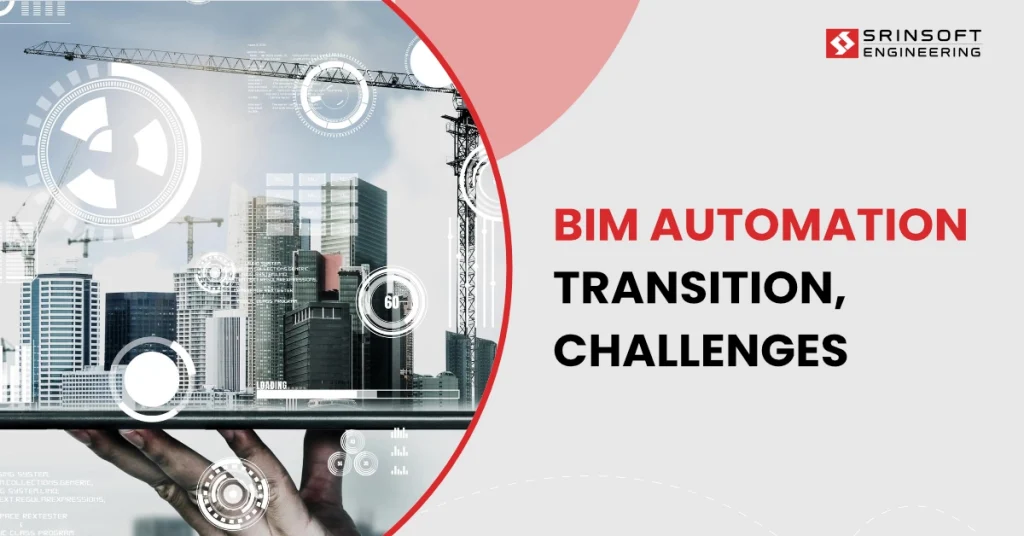
BIM Automation, or Building Information Modeling Automation, refers to the use of automated processes and tools in the field of construction and architecture to enhance various aspects of the project lifecycle.
This encompasses tasks such as 3D modeling, clash detection, quantity takeoffs, and other activities related to the planning, design, and execution of construction projects.
The primary objective of BIM Automation is to improve efficiency, accuracy, and productivity in construction processes by reducing manual labor, minimizing errors, and streamlining communication among project stakeholders.
By leveraging advanced software and technologies, BIM Automation plays a pivotal role in revolutionizing the way construction projects are conceptualized, planned, and ultimately brought to fruition.
Importance in the Construction Industry of BIM Automation
BIM Automation holds immense significance in the construction industry due to its transformative impact on various facets of the construction process.
The integration of BIM (Building Information Modeling) Automation into the construction industry brings forth a range of significant benefits, revolutionizing the way projects are planned, designed, and executed.
Here are the key benefits of BIM automation in construction industry:
1. Improved Efficiency and Accuracy
BIM Automation streamlines repetitive tasks, allowing construction professionals to focus on more critical aspects. This leads to higher efficiency and a notable reduction in errors compared to traditional manual methods.
2. Cost Reduction and Time Savings
By automating tasks like quantity takeoffs and clash detection, BIM Automation significantly reduces the time required for these processes. This translates to cost savings as projects can be completed more swiftly, minimizing labor costs and potential delays.
3. Enhanced Collaboration and Communication
BIM Automation provides a centralized platform for all stakeholders to access and contribute to project data in real-time. This fosters better communication, coordination, and collaboration among architects, engineers, contractors, and other project team members.
4. Accurate Visualization and Planning
Through automated 3D modeling, BIM Automation allows for a realistic and detailed visualization of the project. This aids in better planning, design assessment, and decision-making, ultimately leading to a more successful outcome.
5. Clash Detection and Conflict Resolution
Automation tools within BIM help identify clashes and conflicts in the design phase. This early detection prevents costly rework and delays during the construction process.
6. Precision in Quantity Takeoffs
BIM Automation accurately calculates material quantities needed for a project, resulting in precise cost estimations. This ensures that the project stays within budget and minimizes the potential for resource wastage.
7. Sustainable and Green Building Practices
BIM Automation can be integrated with sustainability assessments and simulations, enabling the implementation of eco-friendly practices and the optimization of resource usage, contributing to greener, more sustainable buildings.
8. Compliance and Regulation Adherence
Automated processes can be programmed to ensure that designs and plans comply with local building codes and regulations. This helps in avoiding costly compliance issues later in the project.
9. Data-Driven Decision-Making
BIM Automation provides a wealth of data that can be analyzed to make informed decisions throughout the project lifecycle. This data-driven approach leads to more strategic and effective project management.
10. Competitive Edge and Innovation
Construction firms that adopt BIM Automation gain a competitive edge in the industry. Embracing innovative technologies not only demonstrates a commitment to efficiency but also positions the company as a leader in adopting cutting-edge practices.
Applications of BIM Automation
BIM Automation, or Building Information Modeling Automation, encompasses a wide range of applications within the construction industry.
Here are some key areas where BIM Automation is particularly impactful:
1. 3D Modeling and Visualization
BIM Automation enables the creation of detailed, accurate 3D models of building structures. This provides stakeholders with a realistic visual representation of the project, aiding in better understanding and decision-making.
2. Clash Detection and Resolution
BIM Automation tools identify clashes and conflicts in the design phase, where different elements of the project may intersect or conflict. This early detection allows for prompt resolution, preventing costly rework during construction.
3. Quantity Takeoffs and Cost Estimation
BIM Automation accurately calculates material quantities required for the project. This information is crucial for precise cost estimations, helping project managers stay within budget and minimize resource wastage.
4. Construction Planning and Sequencing
BIM Automation assists in the development of construction schedules and sequencing plans. It helps in visualizing the construction process, optimizing workflows, and ensuring that tasks are executed in the most efficient order.
5. Facility Management and Maintenance
After construction is complete, BIM Automation continues to be valuable for facility management. It provides a comprehensive digital record of the building’s components, allowing for efficient maintenance, repairs, and renovations.
6. Energy Analysis and Sustainability Assessments
BIM Automation can be integrated with energy analysis tools to evaluate the environmental performance of a building. This includes factors like energy consumption, greenhouse gas emissions, and overall sustainability.
7. Structural Analysis and Engineering
BIM Automation aids in structural analysis, allowing engineers to assess the stability and safety of building designs. It helps in identifying potential structural issues and ensuring compliance with engineering standards.
8. Mechanical, Electrical, and Plumbing (MEP) Systems Integration
BIM Automation facilitates the integration of MEP systems into the overall building design. This ensures that mechanical, electrical, and plumbing components are properly coordinated and do not interfere with each other.
9. Construction Documentation and Reporting
BIM Automation generates detailed reports, including construction documentation, as-built drawings, and project status updates. This provides a comprehensive record of the project’s progress and is crucial for auditing and reporting purposes.
10. Urban Planning and Infrastructure Projects
Beyond individual buildings, BIM Automation is applied to urban planning and large-scale infrastructure projects. It aids in the design, coordination, and management of complex urban environments.
11. Health and Safety Planning
BIM Automation can be used to simulate safety procedures and emergency scenarios within a building. This helps in the development of effective safety plans and ensures compliance with regulatory requirements.
12. Code Compliance and Regulatory Adherence
Automated processes in BIM can be programmed to ensure that designs and plans comply with local building codes and regulations.
This helps in avoiding costly compliance issues and ensures that projects meet legal and safety standards.
These applications demonstrate the diverse and far-reaching impact of BIM Automation in the construction industry, making it an indispensable tool for modern construction projects.
Conclusion
The integration of BIM Automation in the construction industry represents a paradigm shift in how projects are conceived, planned, and executed.
Its benefits span from heightened efficiency and accuracy to substantial cost savings and improved collaboration among project stakeholders.
The ability to visualize projects in three dimensions, along with automated clash detection and precise quantity takeoffs, empowers professionals to deliver higher-quality outcomes in less time.
Furthermore, BIM Automation’s contribution to sustainable and green building practices aligns with the industry’s growing focus on environmental responsibility.
The technology’s versatility extends to structural analysis, MEP systems integration, and even urban planning, demonstrating its relevance across diverse projects and scales.
By embracing BIM Automation, construction professionals position themselves at the forefront of technological innovation, gaining a competitive edge in an ever-evolving industry.
The integration of data-driven decision-making and compliance adherence further solidifies its role as a transformative force.
In essence, BIM Automation is not merely a tool; it’s a catalyst for progress, ushering in a new era of efficiency, precision, and sustainability in construction.
As the industry continues to evolve, embracing this technology is not just a strategic choice, but a forward-thinking commitment to excellence in project execution.


